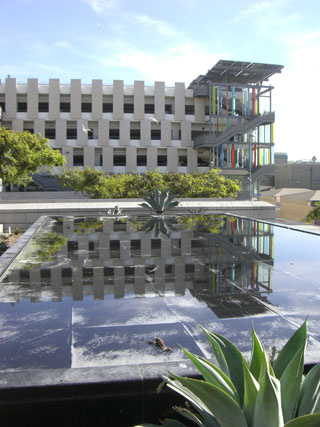|
Storm-water Management:
• Storm-water management plans were implemented and pollution control units have been installed
Landscaping:
• Reclaimed city water, drought tolerant plant species and ‘smart irrigation’ systems have been provided.
Energy Performance:
• High efficiency glazing, photovoltaic arrays on the roof and improved garage lighting efficiency have resulted in a considerable
amount of energy saving.
Recycled Material:
• Structural steel, reinforcing bars, miscellaneous steel, aluminum framing and storefront glazing are of recycled material; thereby preserving natural habitats and natural resources.
Regional Material:
• Structural steel, reinforcing bars, miscellaneous steel, cast in place aggregate, site concrete, metal door framing, glass and drywall are regional materials manufactured within 500 miles of the project site; thereby reducing the need for long distance transportation resulting in the reduction of green house gas emission.
Construction Waste Management:
• 78% of construction waste was diverted from landfill sites and taken for recycling; thereby reducing the contamination of ground water and reducing the need for virgin resources.
Green Power:
• Off site renewal energy is used.
BIM
Building Information Modeling (BIM) is the management of building data using three-dimensional, dynamic building modeling software to increase quality and productivity in building design and construction. Our firm uses the most current software products to facilitate a complete and dynamic Model of your proposed project. Our process produces the Building Information Model which encompasses building geometry, spatial relationships, geographic information, and quantities and properties of building components. Conflict prevention makes BIM the real time/money saver for the end user and the client.
As-built information is often integrated allowing new and existing construction to combine in a seamless package. From inception through the life-cycle of the building project, BIM offers the new best process for conception, design, construction and maintenance of any edifice. |


